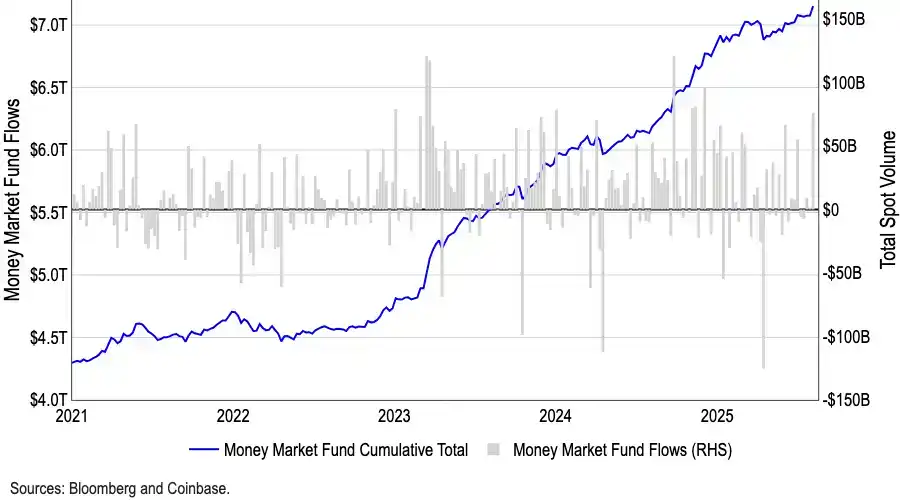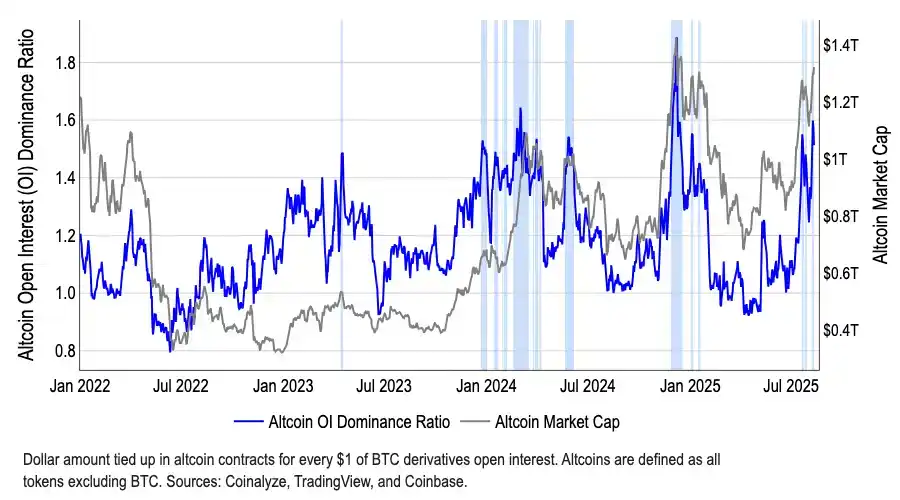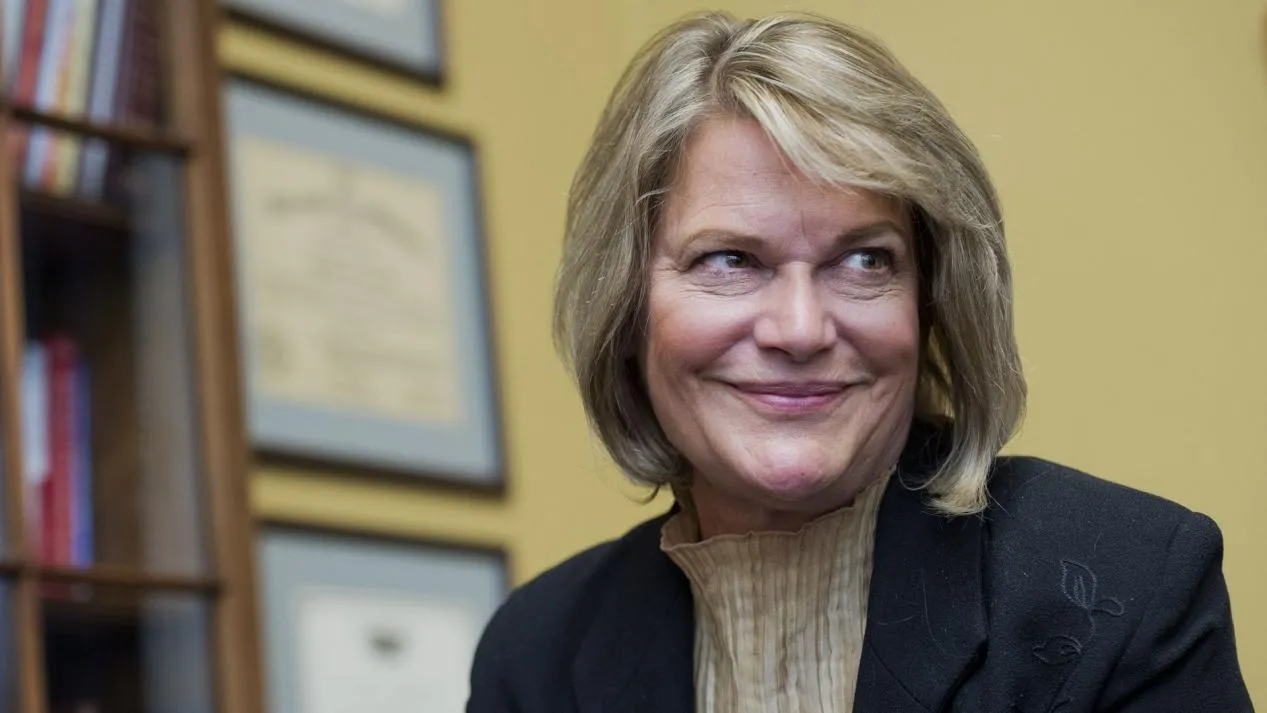On September 17, the Federal Reserve announced a 25 basis point rate cut, marking another directional shift in monetary policy. This follows three rate cuts at the end of 2024 and comes after the Fed had opted to remain unchanged five times in 2025. The decision is the result of multiple overlapping factors: the U.S. labor market has shown significant cooling, with stagnant job growth in August, substantial downward revisions to prior data, and an unemployment rate rising to 4.3%, leading the market to increasingly believe that the support for "full employment" is weakening. Meanwhile, although inflation remains above the 2% target, holding steady at around 2.9% year-on-year in August, the market generally views the price disturbances caused by tariffs as a temporary phenomenon. Against this backdrop, the Fed seems to be prioritizing employment stability over curbing inflation, to some extent responding to the ongoing pressure for rate cuts from President Trump.
It is noteworthy that this policy game is not only a shift in monetary policy but also reveals unprecedented divisions within the Federal Reserve. At the July meeting, two members cast rare dissenting votes, the first time since 1993; meanwhile, Trump's frequent pressure on Powell has added a combustible element to this policy adjustment. The market generally believes that this rate cut will not only affect future financial market trends and policy expectations but may also reshape the global capital flow landscape, becoming a key turning point in this monetary cycle.
How to View This Rate Cut
The Federal Reserve's 25 basis point rate cut is more of a "risk management-style cut" rather than a signal to initiate aggressive easing. The dot plot shows that the median interest rate expectation for 2025 has been lowered from 3.9% to 3.6%, indicating that, following this cut, there is still room for another 50 basis points this year, likely to be implemented in October and December. As of now, the probability of another 25 basis point cut in October is 87.5%. By 2026 and 2027, the median expectations continue to decline to 3.4% and 3.1%, reinforcing the market's judgment of moderate easing in the medium to long term. However, the long-term interest rate anchor remains steady at 3.0%, indicating that the Fed's view of the "neutral rate" has not changed.

The signals conveyed here are quite subtle: on one hand, inflation risks remain relatively high, with the overall PCE year-on-year possibly rising to 2.7% in August, and core PCE still at 2.9%, leading officials to avoid hasty and significant loosening; on the other hand, the downward risks in the labor market compel them to prepare in advance. Thus, Powell's team has chosen a "small steps approach," guiding the market through successive meeting decisions and expectation management rather than allowing for significant policy swings.
From a political perspective, this rate decision can also be seen as a "defensive counterattack" by Powell's conservatives against Trump's camp, maintaining the Fed's "independence." Aside from the newly appointed Fed governor Milan, who still executes the "presidential will," most officials have chosen rationality and solidarity, only releasing some space on the dot plot. In the short term, the market may find comfort in the possibility of consecutive cuts, but in terms of outcomes, Trump has clearly come off worse in this round of the game with the Fed.
Historical Rate Cuts: Market Performance During Rate Cut Cycles
Historically, the Federal Reserve's rate cuts can generally be divided into two categories: preemptive cuts and crisis relief cuts. The rate cuts in 1990, 1995, and 2019 belong to the former, occurring before a full-blown economic recession, primarily aimed at hedging potential risks, often injecting new growth momentum into the market; while the cuts in 2001 and 2008 were forced under the heavy pressure of financial crises, ultimately accompanied by severe market declines. In the current context, with a weak U.S. labor market, tariffs, and geopolitical uncertainties, but signs of easing inflation, the overall environment is closer to a "preemptive cut" rather than a crisis backdrop. It is precisely for this reason that risk assets have continued their strong performance this year, with both Bitcoin and U.S. stocks reaching historical highs.

Related Reading: "With Rate Cuts Approaching, Will the Market Enter a Frenzied Bull Market After September?"
If we plot the rate cut path alongside cryptocurrency market capitalization, it is easy to see a high correlation between the two: declining interest rates often coincide with bull market cycles in the crypto market. The rate cuts in 2020 and 2024 both marked the starting points for parabolic rises in cryptocurrencies. This pattern reaffirms that declining rates have a significant positive impact on risk assets like cryptocurrencies.

How Institutions View the Market After the Rate Cut
Coinbase's research report indicates that the crypto bull market still has room to extend into the fourth quarter of 2025, driven by ample liquidity, a friendly macro backdrop, and supportive regulatory dynamics. Bitcoin is seen as the biggest beneficiary, with its performance expected to continue exceeding market expectations. Unless there are drastic fluctuations in energy prices that push inflation pressures higher, the immediate risks disrupting the U.S. monetary policy path are quite limited. At the same time, the technical demand for Digital Asset Treasuries (DATs) will continue to inject incremental funds into the crypto market. Despite the long-standing "September curse" that has plagued the market—where Bitcoin has seen declines against the dollar in September from 2017 to 2022 for six consecutive years—this seasonal pattern has been broken in 2023 and 2024.
The size of U.S. money market funds has reached a record $7.2 trillion, with a large amount of capital trapped in low-risk instruments. Historically, outflows from money market funds have often correlated positively with rises in risk assets. As the rate cuts take effect, their yield attractiveness will gradually diminish, and more funds are expected to flow into cryptocurrencies and other high-risk assets. This unprecedented cash reserve can be seen as the most powerful potential powder keg for this bull market.

Additionally, structurally, funds have begun to gradually leave BTC. BTC's market dominance has dropped from 65% in May to 59% in August, while the total market capitalization of altcoins has grown by over 50% since early July, reaching $1.4 trillion. Although CoinMarketCap's "Altcoin Season Index" remains around 40, far from the traditional threshold of 75 that defines an altcoin season, this divergence of "indicator sluggishness—market cap soaring" precisely reveals that funds are selectively entering specific sectors, especially ETH. ETH not only benefits from institutional interest as ETF sizes surpass $22 billion but also carries the core narratives of stablecoins and RWA, possessing greater capital attraction than BTC.

Other institutions also have optimistic price expectations for BTC. Sean Dawson from Derive predicts that Bitcoin could reach $140,000 by the end of the year, and if institutional funds continue to flow in, it could even rise to $250,000. Bitmine CEO Tom Lee stated in an interview with CNBC, "Bitcoin's price could easily reach $200,000 before the end of this year." BitMEX co-founder Arthur Hayes also predicted that Bitcoin could climb to $200,000 by the end of 2025, citing the potential for the U.S. government's bond buyback plan to release liquidity into the market, directing investor funds toward higher-risk assets.
However, some stock traders are hedging against short-term volatility risks, as the 25 basis point cut has largely been priced in by the market. Options traders expect the S&P 500 index to experience about 1% two-way volatility on Wednesday, the largest single-day fluctuation in nearly three weeks. IUR Capital CEO Gareth Ryan stated that the key is whether the dot plot confirms an additional rate cut at the end of 2025 and in the first quarter of 2026. If confirmed, the stock market's reaction may be relatively mild; if the intentions are unclear, the market may face greater fluctuations. JPMorgan's trading department has also issued a warning, suggesting that the meeting could evolve into a "buy the rumor, sell the news" event.
免责声明:本文章仅代表作者个人观点,不代表本平台的立场和观点。本文章仅供信息分享,不构成对任何人的任何投资建议。用户与作者之间的任何争议,与本平台无关。如网页中刊载的文章或图片涉及侵权,请提供相关的权利证明和身份证明发送邮件到support@aicoin.com,本平台相关工作人员将会进行核查。




